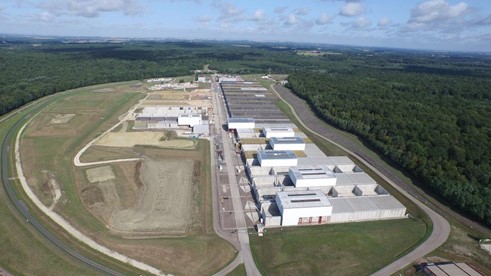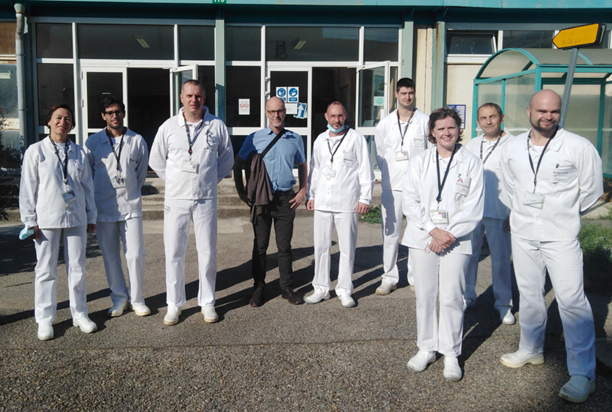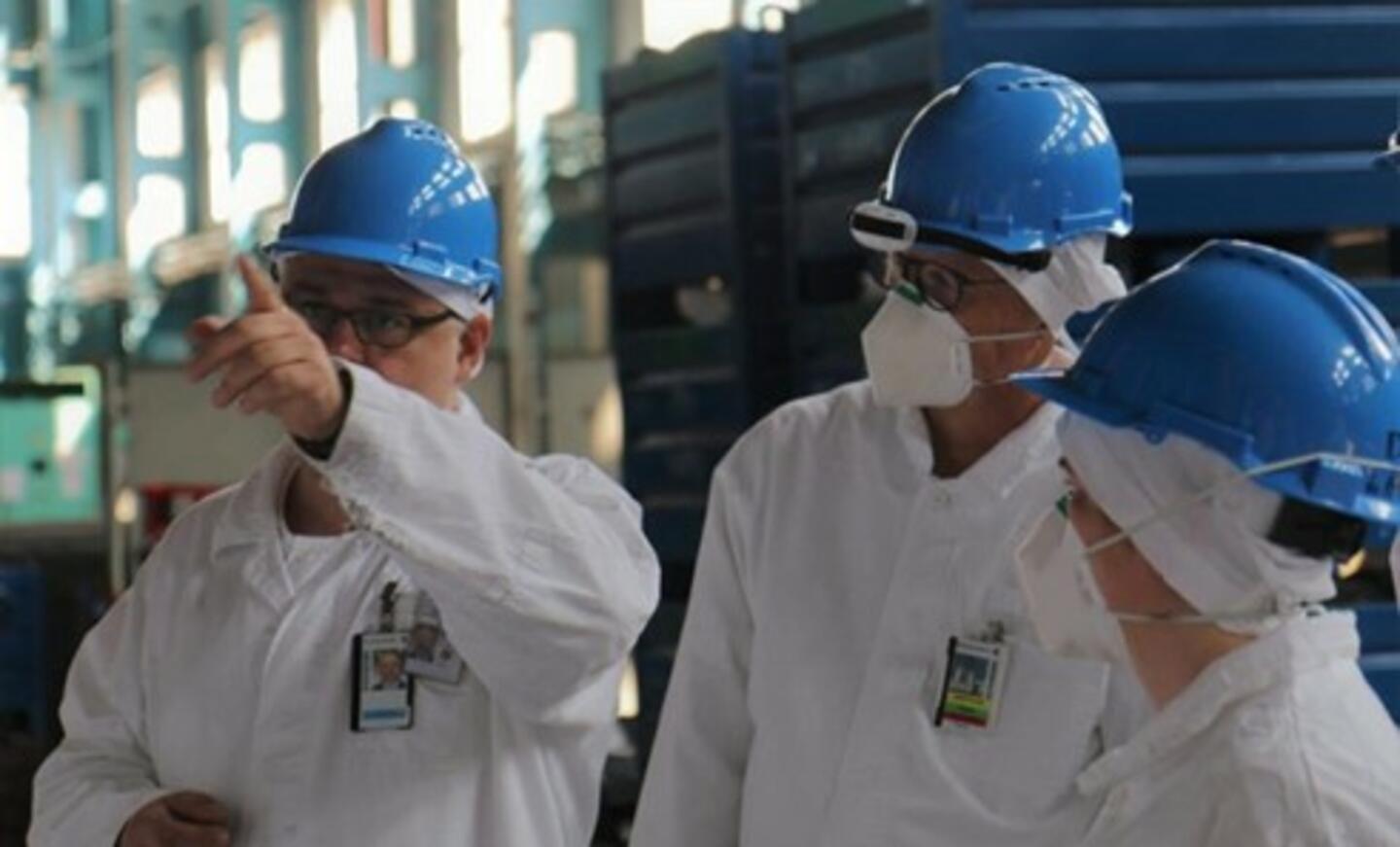The "Safety Enhancement of Ignalina NPP Radioactive Waste Management" project, supported by the EEA and Norway Grants, presents an extraordinary opportunity to advance the expertise in nuclear decommissioning and enhancing competencies. By working together with the State Nuclear Power Safety Inspectorate (VATESI) and the Norwegian Radiation and Nuclear Safety Authority (DSA), the initiative aims to minimise the risk of adverse effects on both people and the environment.
This article explores the crucial role of waste management in the comprehensive decommissioning of the INPP and the steps taken to improve it. But first, let’s dive into some background information about the situation to gain more context.
Ignalina’s symbolism & decommissioning
The INPP played a crucial role in Lithuania's electricity supply and energy independence. It was one of the few nuclear power plants of its kind in the region, using a unique type of reactor called RBMK, also used in the Chernobyl Nuclear Power Plant. This reactor was a contributing factor to the Chernobyl disaster in 1986.
In 2004, Lithuania joined the European Union, and doing so involved an alignment with safety standards and regulations. This led to the decision to shut down the INPP RBMK reactors. As the INPP approaches its closure, scheduled for next year, there is a strong will to reshape the way we deal with nuclear waste. Because over the course of more than three decades, an industrial waste landfill near the INPP site has amassed over 30,000 cubic metres of nuclear waste in total.

The complex challenge of managing radioactive waste
The decommissioning of the INPP is remarkable due to its scale and complexity. The process involves safely shutting down the reactors, managing the accumulated radioactive waste, and ensuring that the environment and public are safeguarded during and after the decommissioning. The collaborative efforts, international funding, and expertise involved in this decommissioning project make the Ignalina Nuclear Power Plant a special case in the realm of nuclear energy.
The importance of the project was further emphasised in an internal evaluation that was part of the project: “This field is extremely relevant on an international scale, so the acquired knowledge and experience are interesting not only for donor countries, but also for other countries. For example, according to the interviews, partners are interested in the experience of conducting research in large areas of very low radioactive waste, because due to regulatory changes, some of the waste that was previously considered construction waste is now considered very low radioactive waste.”
Collaborative efforts in managing nuclear waste
The central objective of the project revolves around elevating the management, control, and prevention of the negative impacts posed by radioactive materials stored at the INPP. While the European Bank for Reconstruction and Development (EBRD) oversees the decommissioning project funded by the European Union, the EEA and Norway Grants initiative provides complementary support, focusing on specific aspects that require attention.
One of the key outcomes of the project is to pave the way for the initial phases of a Deep Geological Repository, a critical component for the long-term storage of radioactive waste. This repository will require meticulous safety assessments for the storage of both industrial waste from the INPP and another waste stream known as bituminised waste. The latter refers to waste that is treated with or converted into bitumen, also known as asphalt.
Empowering through training and partnerships
Integral to the success of the project is its commitment to fostering growth and proficiency. The project encompasses an array of training and capacity-building exercises, designed to equip individuals with the necessary skills to execute the decommissioning process effectively. An essential aspect of this capacity-building lies in the exchange of experiences between Lithuania and Norway.
This collaborative learning occurs through partnerships with the Norwegian Radiation and Nuclear Safety Authority (DSA) and the State Nuclear Power Safety Inspectorate (VATESI). By leveraging international collaboration, the project aims to raise the bar in nuclear decommissioning practices and ensure the safe and responsible management of radioactive materials.
The project further involves partnerships with UAB "Svertas Group," the Center of Physical and Technological Sciences, and the Lithuanian Energy Institute. The initiative introduces innovative waste management concepts, including spent nuclear fuel disposal within clay. It prioritises knowledge sharing and training programs, fostering collective learning for effective nuclear decommissioning practices.

Leading by example
As the project nears its culmination, it is evident that its impact extends far beyond Lithuania's borders. By embracing a holistic and innovative approach, the INPP sets a precedent for responsible nuclear energy practices worldwide. The meticulous attention to safety and environmental protection not only safeguards Lithuania's future but contributes to a cleaner global energy landscape.
This journey has not been embarked upon by a mere few; rather, it has harnessed the dedication and hard work of countless individuals. From engineers and scientists to regulatory bodies and local communities, this united front demonstrates that collective efforts can indeed make a significant difference. Each activity, each decision, and each innovation, no matter how small, has contributed to a greater purpose—the betterment of our world.
The "Safety Enhancement of Ignalina NPP Radioactive Waste Management" project aims to safely manage nuclear waste during the INPP's decommissioning. It collaborates with the State Nuclear Power Safety Inspectorate (VATESI) and the Norwegian Radiation and Nuclear Safety Authority (DSA). With €3,501,094.00 from the EEA & Norway Grants, this project sets a standard for responsible nuclear waste management, ensuring safety and environmental protection by April 30, 2024.
This article is part of the #OurStories campaign. The campaign looks at the vast variety of inspirational stories of projects and connections made possible through the EEA and Norway Grants. We will be sharing these stories on this website through articles and videos published on social media and Youtube. More importantly, #OurStories is a platform for the thousands of project participants who have in one way or the other been involved in projects made possible by the EEA and Norway Grants.
Follow us on social media(@EEANorwayGrants) to stay up-to-date on #OurStories and find more stories here.



